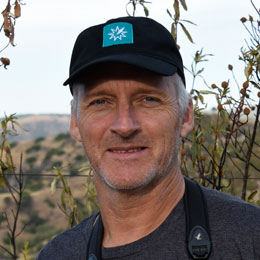Japan's National Parks
onboard Heritage Adventurer
May 31 – June 15, 2026
Japan Cruise
Join Apex Expeditions on an unforgettable circumnavigation of Honshu, Japan’s main island. This Japan cruise itinerary has been specially designed to explore and experience the seamless blend of ancient customs with ultramodern living, incredible wilderness, wildlife, and renowned arts as you sail from iconic cities to offshore islands and even Ulsan in South Korea. Highlights include visits to the living museum Ise-Shima National Park, Japan’s most sacred shrine complex Ise Jingū, and the buzzing metropolis of Fukuoka. Explore the island-dotted seascapes of Matsushima and Ago Bay; discover the unique plants, wildlife, and wilderness trails on registered Global Geoparks and UNESCO World Heritage Sites. Join us on this rare opportunity for an in-depth exploration of the coastline and islands of Japan.

Destinations
- Travel by Air
- Travel by Road
- Travel by Boat
- Travel by Bullet Train
- Travel by Rail
- Travel by Dog Sled
- Day 1
- Day 2
- Day 3
- Day 4
- Day 5
- Day 6
- Day 7
- Day 8
- Day 9
- Day 10
- Day 11
- Day 12
- Day 13
- Day 14
- Day 15
- Day 16
-
Sunday, May 31: Arrive Osaka, Japan
Arrive in Osaka, Honshu’s largest port city and a vibrant mix of modern and ancient architecture. Transfer to the Osaka Hilton Hotel where you’ll meet your fellow travelers and expedition team for a welcome dinner this evening. Overnight at Osaka Hilton Hotel.
-
Monday, June 1: Osaka / Embark Heritage Adventurer
Enjoy breakfast at the hotel before setting off to explore Osaka. Opportunities here include visiting Minoh Park, one of Japan’s smallest National Parks and home to the iconic 108-foot-high Minoh Waterfall and diverse wildlife, including the Japanese Giant Salamander and protected Mino Monkey. Explore Osaka Castle, one of Japan’s most famous landmarks, take in the views from Osaka Castle Main Tower and relive dramatic stories of warlords and Osaka’s fascinating history. This afternoon, embark Heritage Adventurer, your home away from home for the next 14 nights.
-
Tuesday, June 2: Ise-Shima National Park
Explore Ise-Shima National Park, often likened to a living museum. Comprising some 125 different shrines hidden among a labyrinth of mossy walls and dating back to the third century, the peninsula of Ise-Shima has plenty to discover. Ise Jingū is Japan’s most sacred shrine and considered the spiritual home of Shinto cosmology. Explore the grand shrine Kotai Jingū, made entirely of Japanese cypress where no metal nails or screws have been used in its construction and, in accordance with Shinto practice, is rebuilt every 20 years to preserve its purity. Currently in its 62nd iteration, it was last rebuilt in 2013.
Shima has been an official source of seafood for Japan’s imperial family since the 5th century. At Ago Bay gaze out over the fascinating seascape created by more than 60 islands dotting the water. Shima’s sacred Meoto Iwa, Wedded Rocks, are connected by a shimenawa rope near the Futami-Okitama Shrine. At Ise Contemporary Art Museum discover a diverse collection of works by both Japanese and international artists including the famed sculpture garden featuring work by Atsuo Okamoto.
-
Wednesday, June 3: Izu Oshima Island
Izu Oshima is the largest of the Izu Islands, ‘Tokyo’s Treasure Islands’, a chain of islands lying to the south of the Japanese mainland, which preserves its own unique natural and human history. You can choose to hike up Mount Mihara, or Oshima Fuji as it’s known by the less than 7,000 locals. Almost entirely covered by forests, Izu Oshima Island was certified as a Japan Geopark in September 2010 in recognition of its unique status. Visit The Great Road Cut geological site, featuring 2,300-foot-long cliffs with undulating layers of volcanic stratum, which has earned it the nickname ‘Baumkuchen’ due to its resemblance to the famous layered cake.
-
Thursday, June 4: Ishinomaki
After a morning at sea with presentations from your expedition team, arrive in the port city of Ishinomaki. Options today include exploring the Shiogama Seafood Wholesale Market and its colorful urban core showcasing its ‘manga’ culture—the art of Japanese comic books and illustrated novels—thanks to famed pioneer Shotaro Ishinomori, creator of the popular Kamen Rider series. Visit the iconic Ishinomori Manga Museum established in his honor. Throughout the city, observe artworks and statues celebrating the importance of the artist and his art on Japanese culture. If time allows, visit the 2011 Iwate Tsunami Memorial Museum and try your hand at painting some of the region’s iconic Kokeshi Dolls. Alternatively, explore Sanriku Fukkō National Park, known for its dramatic scenery. The park was increased to 95,227 acres and renamed in 2013 from Rikuchu Kaigan National Park to encourage the region’s recovery efforts following the devastating 2011 earthquake and tsunami. Explore jagged cliffs, white-sand beaches, quaint fishing ports, hiking trails, and unique flora and fauna. Black-tailed Gull, Streaked Shearwater, Peregrine Falcon, and Osprey all breed here, while botanists can look for Thunberg Lily and Beach Morning Glory among the many flowers.
-
Friday, June 5: Hachinohe
With a Pacific shoreline of outstanding natural beauty, a clutch of fantastic cultural sights, bustling markets and delectable seafood, there is lots to see and experience during your visit to Hachinohe and the Aomori Region. Explore the region’s fascinating connection with contemporary art through visits to two of Japan’s best contemporary art museums—the recently opened Hachinohe Art Museum and the Towada Art Center. Reflecting a new approach to contemporary art, Hachinohe Art Museum, also known as an ‘art farm’, offers a dynamic new interpretation of how and where art is created, housed in an innovative design intended to bring the community together to utilize the space. At Towada Art Center, one of Japan’s foremost contemporary art institutions, the striking Ryue Nishizawa-designed building features contemporary artists such as Leandro Erlich, Yayoi Kusama, and Ron Mueck.
Alternatively, visit the stunning Lake Towada, a 2,000-year-old flooded double caldera 1,300 feet above sea level, and its surrounding forest in Towada Hachimantai National Park. Lake Towada is the largest caldera lake on Honshu and is characterized by two large peninsulas which extend nearly a third of the way across the lake. On a clear day, Mount Towada is reflected in the still waters of the lake creating a picture-perfect scene. Take in these expansive views from the Hakka Pass Observatory or continue with a walk at Tsuta Numa Lake that brings you to Oirase Stream with its beautiful cluster of 30 waterfalls.
-
Saturday, June 6: Muroran
Adventures abound at Shikotsu-Toya National Park, named after its famous twin caldera lakes. Another picturesque natural hot spot, the park’s spectacular scenery includes impressive lakes, hot springs, and a volcanic wonderland, which are all easily accessible and offer multiple hiking and walking options. Activities here include riding the cable car to the top of Mount Usu to take in the grand views over Lake Toya, and visiting the geothermal spectacle of steaming vents, bubbling mud, and sulphurous streams at Jigokudani or ‘Hell Valley’. Observe and experience the Ainu culture, including cuisine, music, and crafts at the Upopoy National Ainu Museum, which stands on the shores of Lake Poroto. Explore Muroran in the afternoon where options may include visiting the scenic cape and lighthouse, or experiencing the Noboribetsu Onsen, a traditional Japanese natural thermal spring.
-
Sunday, June 7: Akita
A key city in the Tohoku region since medieval times, Akita was once a castle town of the Satake clan. Today it is a vibrant, prosperous city that seamlessly honors its past while embracing its young, energetic spirit. Noted for its burgeoning art community, there are several museums to explore, including the Akita Museum of Art, which houses a collection of work by Western and Japanese artists, the Akita City Folklore Museum, and the Namahage Museum. The latter, in Ogi, shares the area’s lore of an ogre that visits on New Year’s Eve to search for lazy children or wives to punish. Alternatively, discover Akita’s little-known Kaiyu-style Japanese Suishin-en Garden. Explore its many pathways, bridges, ponds filled with Koi, waterfalls, and skunk cabbage garden under the shade of towering trees planted by the then Crown Prince and Princess.
-
Monday, June 8: Sado Island
Today you will explore remote Sado Island off the coast of Niigata. The entire island is designated as one of Japan’s Geoparks and comprises the mountain ranges of Osado and Kosado flanking the Kokunaka Plain. Once a destination of political exile, it now boasts its own rich cultural and religious life incorporating puppet theatre, Okesa folk songs, Ondeko drumming, and demon dances. Home to the Japanese Crested Ibis, extinct on the mainland, and the iconic Taraibune Tub Boats, which you will have the opportunity to experience. This ‘off the beaten path’ island combines wilderness, wildlife, and stunning natural scenery—including Senkakuwan Bay and Ogi Peninsula— with a rich history, including gold and silver mining, Samurai warrior culture, and unique agri- and aqua- culture practices. Sado Island is widely considered a perfect miniature version of Japan. Visit the Shukunegi Village National Important Preservation Area and learn more about traditional taiko drumming at the Sado Island Taiko Center.
-
Tuesday, June 9: Kanazawa
Options today include exploring the historic mountain settlement and UNESCO World Heritage Site of Shirakawa-go, high in the remote mountains of the Shogawa River Valley in Hakusan National Park. Experience the unique cultural traditions, including the region’s iconic Gassho-zukuri farmhouses, some of which are more than 250 years old, designed to withstand heavy snow in winter and provide a large attic space for cultivating silkworms. Alternatively, explore the rich art center of Kanazawa discovering some of the unique styles of Japanese art. Kanazawa is rightly famous for its Kutani-style pottery, exquisite lacquerware, gold-leaf workmanship, hand painted silk, and classical Noh dance-drama performed since the 14th century. Wander the winding cobblestone streets of Kanazawa’s Geisha district, explore craft galleries, and visit the impressive Edo-period Kenroku-en Garden, one of the Three Great Gardens of Japan.
-
Wednesday, June 10: Matsue
This morning we arrive at the port of Sakaiminato, entry point to Matsue, known as ‘the town of water’ due to being situated between Lake Shinji and Lake Nakaumi. We plan to visit Matsue Castle, a national treasure and one of Japan’s few largely-intact 17th-century castles. Other options today may include exploring Daisen-Oki National Park and Mount Daisen with its rich Buddhist culture, once home to 3,000 soldier monks. Enjoy panoramic views from the Ogamiyama Shrine before visiting the breathtaking Daisenji Temple. The Adachi Museum of Art is renowned for its superb Japanese gardens and collection of contemporary Japanese paintings, comprising some 1,500 of the country’s most highly regarded paintings produced after the Meiji period.
-
Thursday, June 11: Ulsan, South Korea
Today we cross the Sea of Japan to Ulsan in South Korea where we plan to visit the UNESCO World Heritage Site of Gyeongju. The capital of the Silla Dynasty and dating back to the first millennium, Gyeongju is known as ‘the museum without walls’ and is full of ancient Korean history and Buddhist culture. Stroll among excavated monuments, temples, tombs, and pagodas at Tumuli Park and the Bulguksa Buddhist Temple. You may also visit the iconic Woljeonggyo Bridge, savor Korean delicacies, and explore Hwanglidangil Road, a trendy, yet traditional, Korean-style shopping street, and walk in the beautiful Taehwagang Bamboo Forest. Today is a perfect taste of South Korea.
-
Friday, June 12: Fukuoka, Japan
The largest city on the island of Kyushu is the union of the castle town of Fukuoka on the west bank of the Naka River and the merchant town of Hakata on the east bank. This buzzing metropolis combines an effortless blend of trendy Yatai food stalls with vibrant art installations, historic ruins, and colorful coastal parks. During your time here there may be opportunities to explore the northern city of Kitakyushu and the famed Kokura Castle, TOTO Museum, and Kawachi Wisteria Garden, or Nanzoin Temple with its reclining bronze Buddha (thought to be the world’s largest bronze statue). Dazaifu Tenmangu Shrine, built on the gravesite of poet and scholar Sugawara no Michizane, is surrounded by beautiful gardens, ponds and more than 6,000 plum trees.
-
Saturday, June 13: Hiroshima & Miyajima
Despite being the site of the atomic bomb attack on August 6, 1945, Hiroshima is a vibrant and thriving cosmopolitan community. Visit the beautiful Peace Park and Museum, with its somber cenotaph containing names of atomic bomb victims, and the permanently lit ‘Flame of Peace’. If possible, visit Miyajima Island during high tide to experience the floating Torii Gate. Considered one of Japan’s most scenic spots, it is also the location of the famed Daisho-in Buddhist Temple. Choose to indulge in fresh local oysters and ice cream while hoping to spot native Sika deer wandering the streets.
-
Sunday, June 14: Takamatsu
Shikoku Island’s Takamatsu has a long history as a port town, earning itself the nickname ‘Gateway to Shikoku’, although more recently locals call it ‘Udon Kingdom’. If you are interested in plants, a visit to Ritsurin Park, considered one of Japan’s finest gardens, is sure to be a highlight. Next, enjoy a visit to Kinashi Garden, one of Japan’s main bonsai production centers, where you can learn about traditional growing methods. Visit Mount Yashima, a historic mountain that played a significant role in the Genpei War during the late 12th century, before visiting the open-air museum of Shikoku Shikoku-mura. Art enthusiasts may wish to travel to Naoshima Island—Japan’s art island— for a full-day excursion that will have you admiring Naoshima’s architecture and museums which include Chichu Art Museum and Benesse House, featuring work by Japanese and international artists including Yayoi Kusama’s iconic pumpkins.
-
Monday, June 15: Osaka / Disembark Heritage Adventurer / Depart
This morning sail back into Osaka, after breakfast transfer to the airport for flights homeward.
Details
- May 31 – June 15, 2026
- Leaders Jonathan Rossouw, Gerald Broddelez, Matt Boyle & Kristian Gillies
- Rates starting from $15,565 per person Rate details

Japan's National Parks, 2026
onboard Heritage AdventurerSuite Categories Per Person Rates Deck 4 Superior $15,565 Deck 5 Superior $16,555 Worsley Suite $19,078 Heritage Suite $24,990 Solo - Main Deck $18,730 Solo - Deck 5 $20,045 - 16 days Trip Length
- 140 guests onboard Heritage Adventurer
- Osaka Start/End
Call us to reserve your spot on this exciting expedition!










